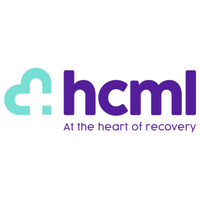The role of occupational health in the workplace is changing
The landscape of occupational health in the UK is experiencing a significant transformation.
As the nation’s health deteriorates and people live longer with ill health conditions, the needs and expectations of both employers and employees go way beyond what traditional occupational health can deliver when it comes to health and wellbeing in the workplace.
The evolution of occupational health is being driven by a variety of factors, including changing work patterns, a rise in mental ill health and a growing recognition of the impact of wider lifestyle factors on health.
Physical vs mental health
A significant shift in the role of occupational health is the growing emphasis on mental health and wellbeing.
Traditional occupational health provision tends to focus on physical health and the clinical presentation of illness and workplace injury.
While musculoskeletal conditions are one of the biggest workplace risks, the mental health of employees has significantly deteriorated.
More than half (53%) of employers cited mental health conditions as a top reason for absence, according to a 2024 HCML study on how gender and age influence workplace health and wellbeing.
Employers are increasingly recognising the impact of stress, anxiety, and depression on their workforce, however what is important to note is that mental health conditions can occur due to many lifestyle factors.
Occupational health services are responding by incorporating mental health provision into their services, but also looking at wider support to address lifestyle factors that influence mental health.
This can mean offering resources such as employee assistance programmes (EAPs), mental health first aid training, and access to counseling services.
As well as including mental health provision into their services, occupational health professionals must now play a key role in these efforts by providing training and support to managers and employees on how to recognise and address mental health issues.
Ill health is not just work related
While our own data shows that from 41,360 health assessments, 42% of employees perceive work to be a contributing factor to their mental health condition, we also find there are many more risk factors that are impacting on health.
In fact, ill health in the workplace is often not caused or made worse by work.
When assessing the broader risks, it is clear that ill health is multifactorial and that personal risks relating to lifestyle and behaviour play a significant role.
Therefore, a move away from the traditional reactive occupational health approach to a holistic, person-centred approach that actively engages employees in the management of their own health is central to the evolution of occupational health.
A multidisciplinary approach
Where traditionally, there has been a reliance on occupational health nurses and doctors to conduct health assessments and manage injury and illness in the workplace, we now better understand the broader risks of lifestyle on employee health and wellbeing.
This means occupational health provision needs to evolve and encompass a broader range of professionals to assess and support where most appropriate.
This might include a physiotherapist, sport and exercise scientist, CBT practitioner, nutritionist, counsellor, or a combination of practitioners, depending on the assessment outcome.
Engaging the employee
With many workplaces already providing health and wellbeing initiatives, employers have the perfect opportunity for streamlining occupational health processes and improving health outcomes by integrating with these programmes.
For example, in cases of sickness absence, the occupational health provider can work with the relevant line managers and HR to discuss any interventions and adjustments that can be facilitated by the business.
These can then be used to inform the recommendations, ensuring that both employee and business needs are fully considered.
Inclusivity and diversity
There is a growing focus on inclusivity and diversity in the workplace.
Demand for assessment is high and even after diagnosis, the support available can be few and far between, which is where occupational health comes in.
Considerations include putting in supportive structures around the challenges that neurodivergent employees face.
This can include coaching programmes that help develop coping strategies such as organisation and communication skills.
The role of data and analytics
Ensuring occupational health data is consistent and can be mapped across the various services can provide valuable insights into trends and areas for improvement.
Occupational health services are leveraging technology to gather data on various aspects of employee health, such as absenteeism, productivity, and engagement.
This data can then be used to identify patterns and develop targeted interventions.
For example, if data shows a high prevalence of musculoskeletal issues in a particular department, occupational health can provide targeted preventative interventions in that area, including self-help and education.
Importantly, the data can help build a roadmap for the overall occupational health and wellbeing strategy within a business.
Supplied by REBA Associate Member, HCML
HCML is a health and wellbeing provider, offering integrated and personalised healthcare solutions.








